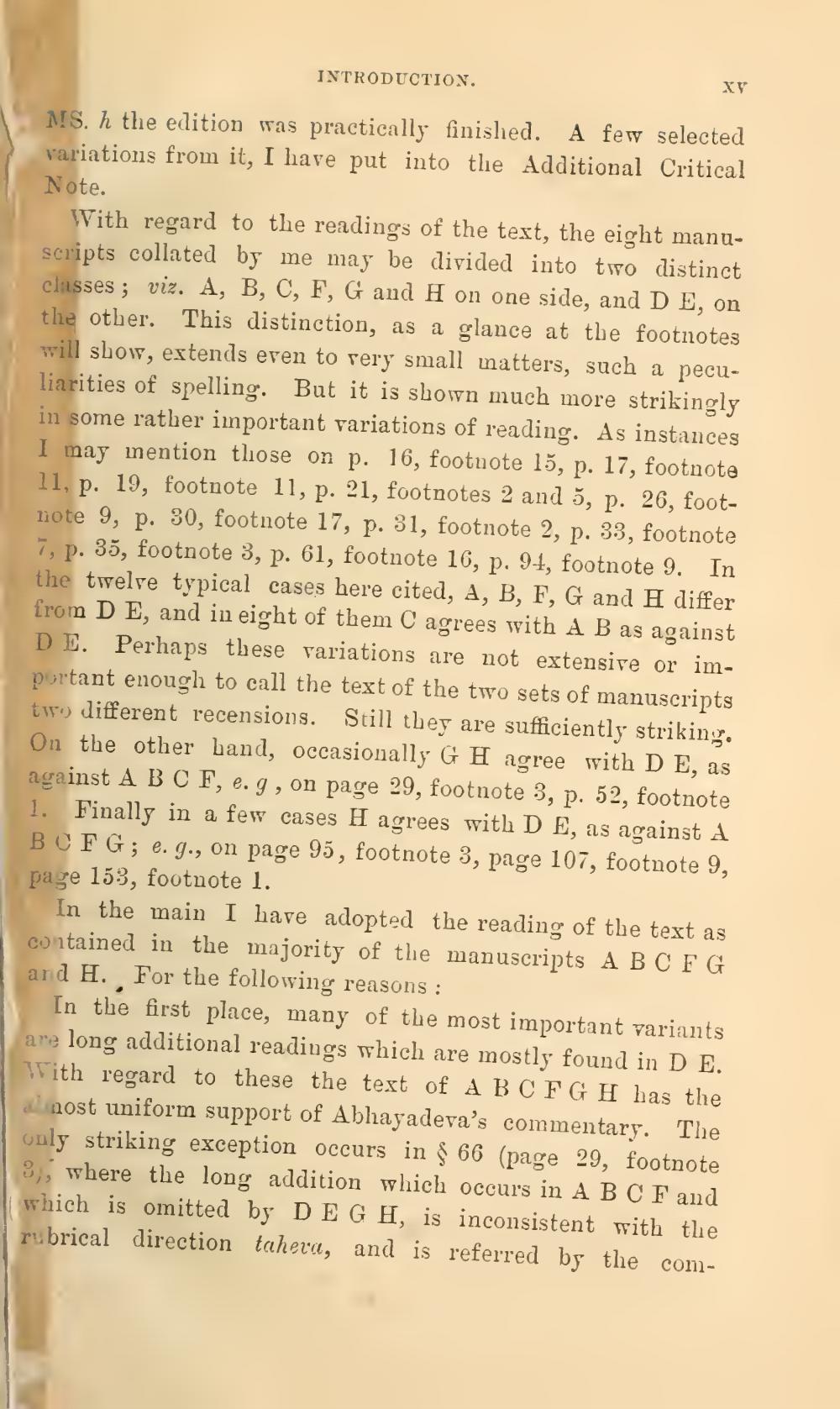________________
INTRODUCTION.
MS. h the edition was practically finished. A few selected variations from it, I have put into the Additional Critical Note.
With regard to the readings of the text, the eight manuscripts collated by me may be divided into two distinct classes; viz. A, B, C, F, G and H on one side, and D E, on the other. This distinction, as a glance at the footnotes will show, extends even to rery small matters, such a peculiarities of spelling. But it is shown much more strikingly in some rather important variations of reading. As instances I may mention tliose on p. 16, footnote 15, p. 17, footnote 11, p. 19, footnote 11, p. 21, footnotes 2 and 5, p. 26, footnote 9, p. 30, footnote 17, p. 31, footnote 2, p. 33, footnote 7, p. 35, footnote 3, p. 61, footnote 16, p. 94, footnote 9. In the twelve typical cases here cited, A, B, F, G and I differ from D E, and in eight of them C agrees with A B as against D E. Perhaps these variations are not extensive or important enough to call the text of the two sets of manuscripts two different recensions. Still they are sufficiently striking. On the other band, occasionally G H agree with D E, as against A B C F, e.g, on page 29, footnote 3, p. 52, footnote 1. Finally in a few cases H agrees with D E, as against A BCFG; e.g., on page 95, footnote 3, page 107, footnote 9, page 153, footnote 1.
In the main I have adopted the reading of the text as contained in the majority of the manuscripts A B C F G and H. For the following reasons :
In the first place, many of the most important variants are long additional readings which are mostly found in D E. Vith regard to these the text of ABCFG H has the
nost uniform support of Abhayadeva's commentary. The only striking exception occurs in § 66 (page 29, footnote 3;, where the long addition which occurs in A B C F and which is omitted by DEGH, is inconsistent with the rubrical direction tahera, and is referred by the com




